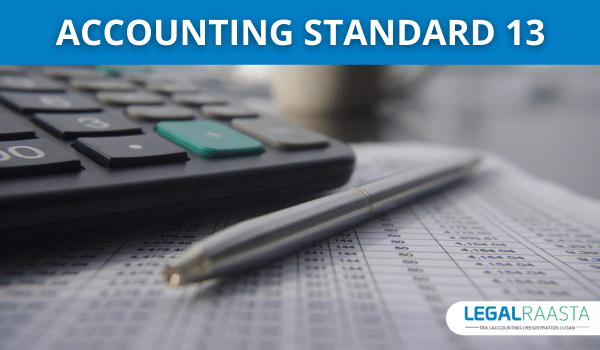AS 7 – Construction Contracts
AS 7 Construction Contract defines and specifies the accounting treatment of revenue and expenditures associated with a construction contract. Construction contracts have to be accounted for in the financial statements of the contractors using Accounting Standard 7 Construction Contract.
Different Types Of Contracts
A construction contract is one that is entered into expressly for the building of an asset or a group of assets that are tightly linked or interdependent in terms of technology, design, function, or the nature of its final purpose or use.
-
Contract with a Fixed Price
A contract in which the contractor and the client agree on a set price for the project. In rare situations, the contract may include a cost escalation provision that is mutually agreed upon by both parties. For example, the parties agree to insert a condition in the contract that allows them to change the contract price if the cost of raw materials rises.
-
Contract with a cost-plus provision
A contract in which the contractor is reimbursed for expenses incurred or agreed upon, as well as a fixed proportion of these expenses.
-
Construction Contracts: Combining and Segmenting
– Construction Contract Combination – When a group of contracts, either with one or more clients, are negotiated as a single package, are interconnected and constitute part of a single project, and are completed in a continuous sequence, they have termed a single construction contract.
A contract for the construction of three similar structures (in every way) on a single plot, for example, maybe arranged all at once.
– Construction Contract Segmentation – When a contract includes more than one asset, each asset’s construction should be treated as a separate construction contract if separate proposals have been submitted for each asset, each asset has been separately negotiated, and each asset’s costs and revenues can be identified separately.
For example, a contract for the construction of three separate structures on the same site, each with its own set of specifications, is negotiated separately with the contractor.
Revenue from a Contract
To the extent that it is likely to generate income and is measurable, contract revenue includes the following:
- The contract’s agreed-upon initial income amount;
- Claims and incentives based on contract work changes;
Contractual Costs
The following items are included in the cost of a contract:
- Costs that are directly tied to the specific contract
- Costs that are attributed and assigned to contract activities in general
- Any other charges that are specifically charged to the client under the contract’s conditions.
Revenue and Cost Recognition from a Contract
When the result or outcome of a construction contract may be forecasted, the relevant contract revenue and contract costs must be recognized based on the contract’s current level of completion. Expected losses must be recorded as expenses right away.
I. In the case of a fixed-price contract, the outcome can be reliably estimated if all of the following conditions are met:
1. The whole revenue from a contract can be accurately calculated.
2. It is obvious that the financial benefits of such a contract will accrue to the company.
3. Both contract expenses and contract completion status can be calculated.
4. Contract expenses can be readily defined for a cost comparison with previous estimates
II. When all of the following conditions are met in the case of a cost-plus contract, the outcome can be reliably estimated:
1. The contract’s financial gains are likely to accrue to the organization.
2. The contract costs that are related to the contract can be readily identified and measured.
III. Percentage of completion method – This technique specifies how income and costs are recognized based on the contract’s stage of completion. Revenue and cost are recognized in the profit and loss statement in the accounting periods in which the job is completed using this technique.
IV. Contract work-in-progress costs — A contractor may incur costs related to future contract activity. If it is likely that such costs will be recovered, they are recorded as an asset.
Determination of the completion stage
A contract’s state of completion can be determined in a variety of ways. The following approaches may be used, depending on the nature of the contract:
- The proportion of contract costs incurred compared to the total projected contract costs; (for example, if the total contract cost is Rs. 30 lakhs and the costs incurred to date are Rs. 15 lakhs, the stage of completion is considered 50% complete, or 15 lakhs / 30 lakhs).
- Work-in-progress surveys; for example: in a contract for construction of a bridge, the site inspector can do a survey and with regards to the technicalities of the project, inform how much work has been completed
- Physical completion of contract work for example, in a contract for the construction of a five-story structure, if three stories are completed, the stage of completion is 6%, or 3 stories/5 stories.
- When the outcome of a construction contract cannot be predicted, income and cost should only be recognized to the extent that contract costs incurred are likely to be recovered.
Expected Losses are Recognized
When overall contract costs are likely to exceed total revenue from a contract, the expected losses should be reported as expenses as soon as possible. Regardless of the following, the number of such losses must be determined:
- The work has commenced on the contract or not
- The completion stage
- The estimated number of earnings from other contracts, which are subdivided as previously mentioned.
Disclosures required in financial statements:
1. An organization should make the following disclosures:
- Revenue from contracts recognized during the accounting period
- The methodologies for calculating contract revenue recognized during the period
- The procedures for determining the state of fulfillment of ongoing contracts.
2. At the reporting date, the following disclosures on contracts in progress must also be made:
- The total amount of money spent and the amount of money made.
- The number of advances received
- The amount of retained earnings
An organization should exhibit the following:
- As an asset, the gross amount payable from consumers for contract work;
- As a liability, the gross sum is payable to customers for contract work.
Differences between Indian Accounting Standards (IAS) 11 and AS 7
| According to Ind (IAS) 11, | AS 7 specifies |
| There is no specific mention of borrowing expenses | In AS 7 borrowing charges are specifically included in expenses. |
| Contract revenue must be calculated at the fair market value of the consideration received/receivable. | Contract revenue must be recognized at the fair market value of the consideration received/receivable in AS 7 |
| Deals with Service Concession Arrangements, which are agreements between a public and private entity to build, operate, and transfer infrastructure projects. | Service Concession Arrangements are not covered under AS 7 |
Also Read,










